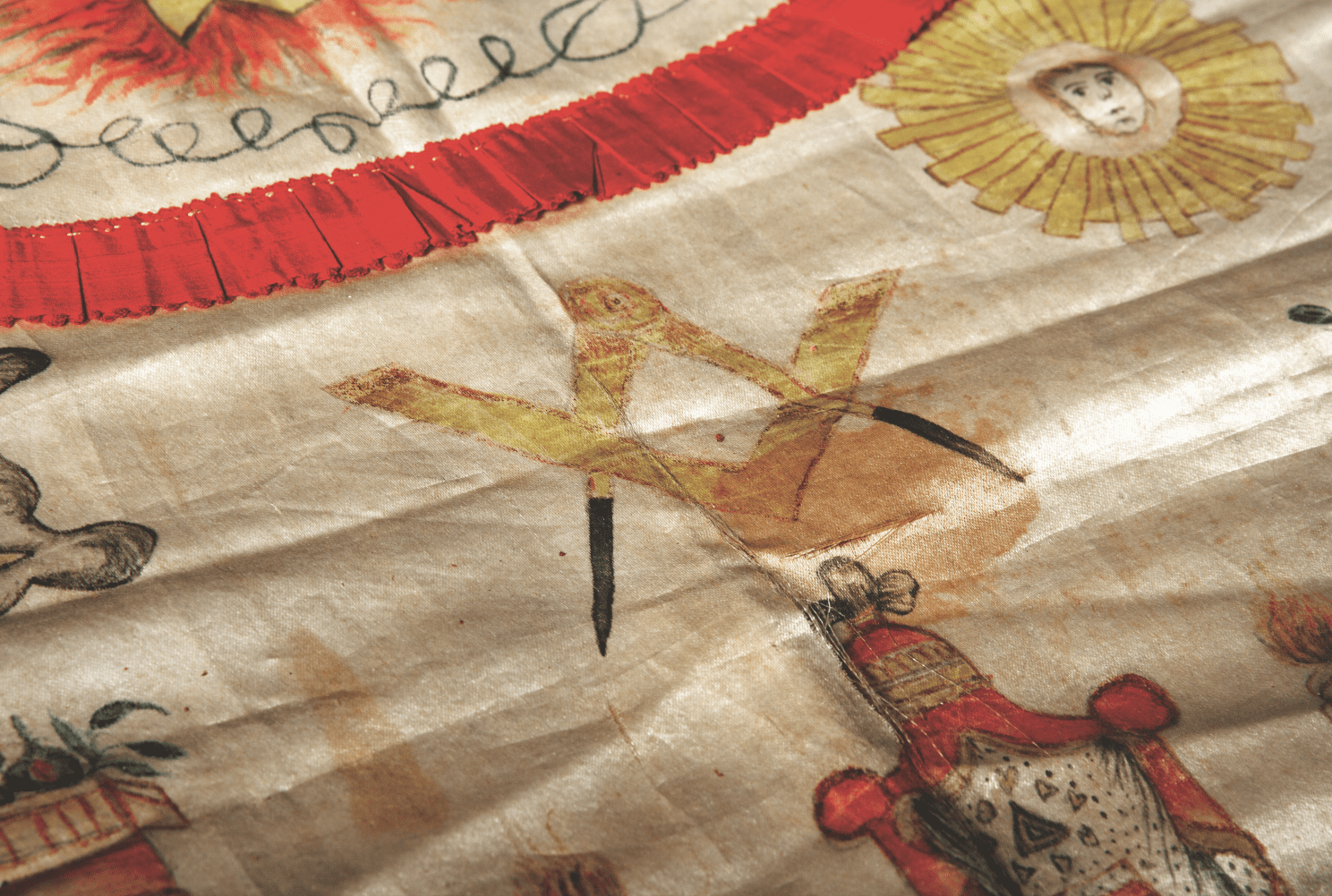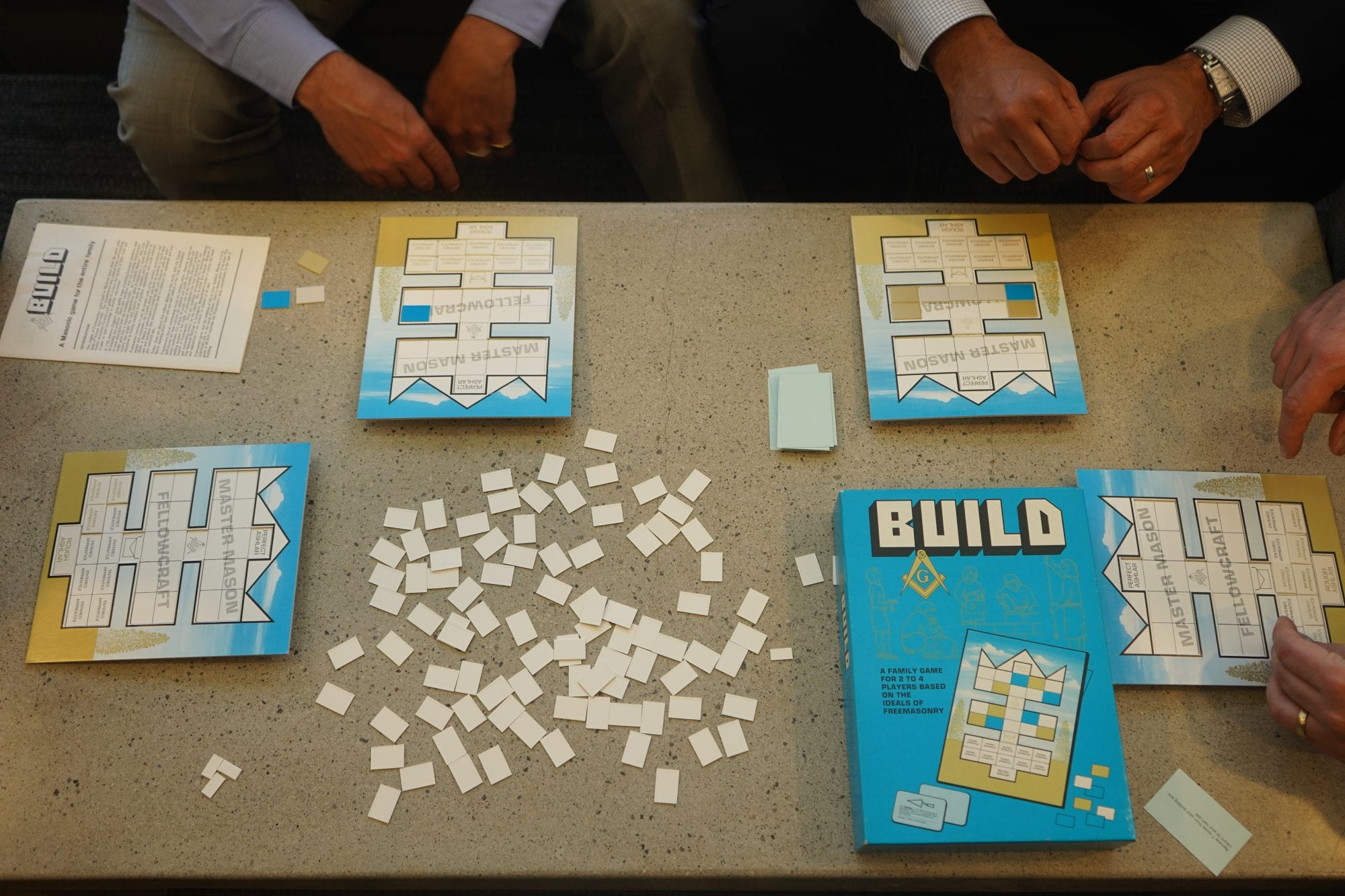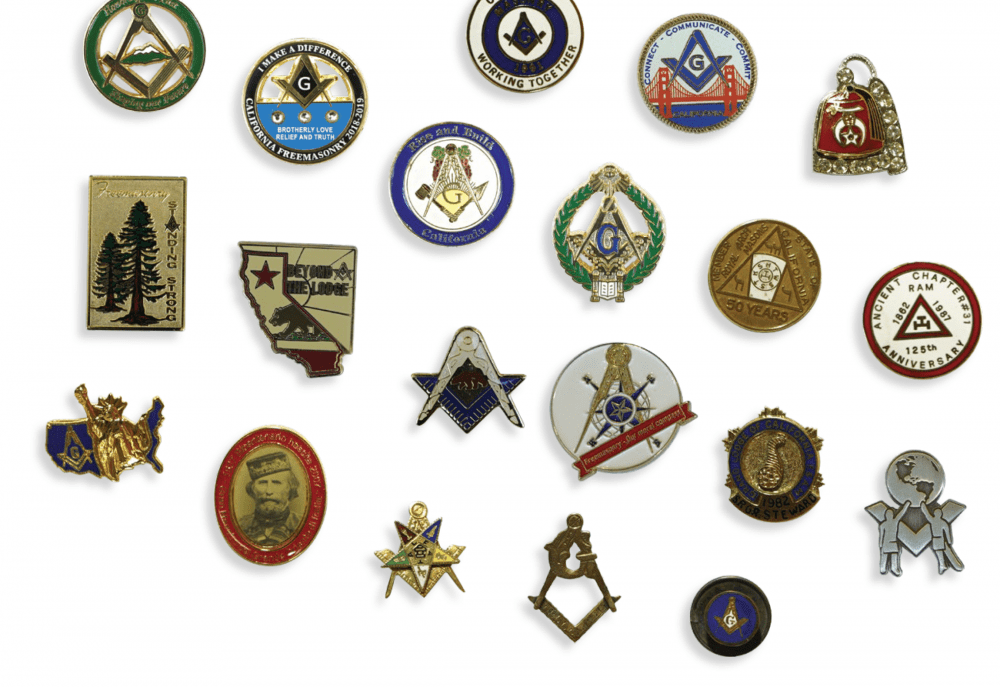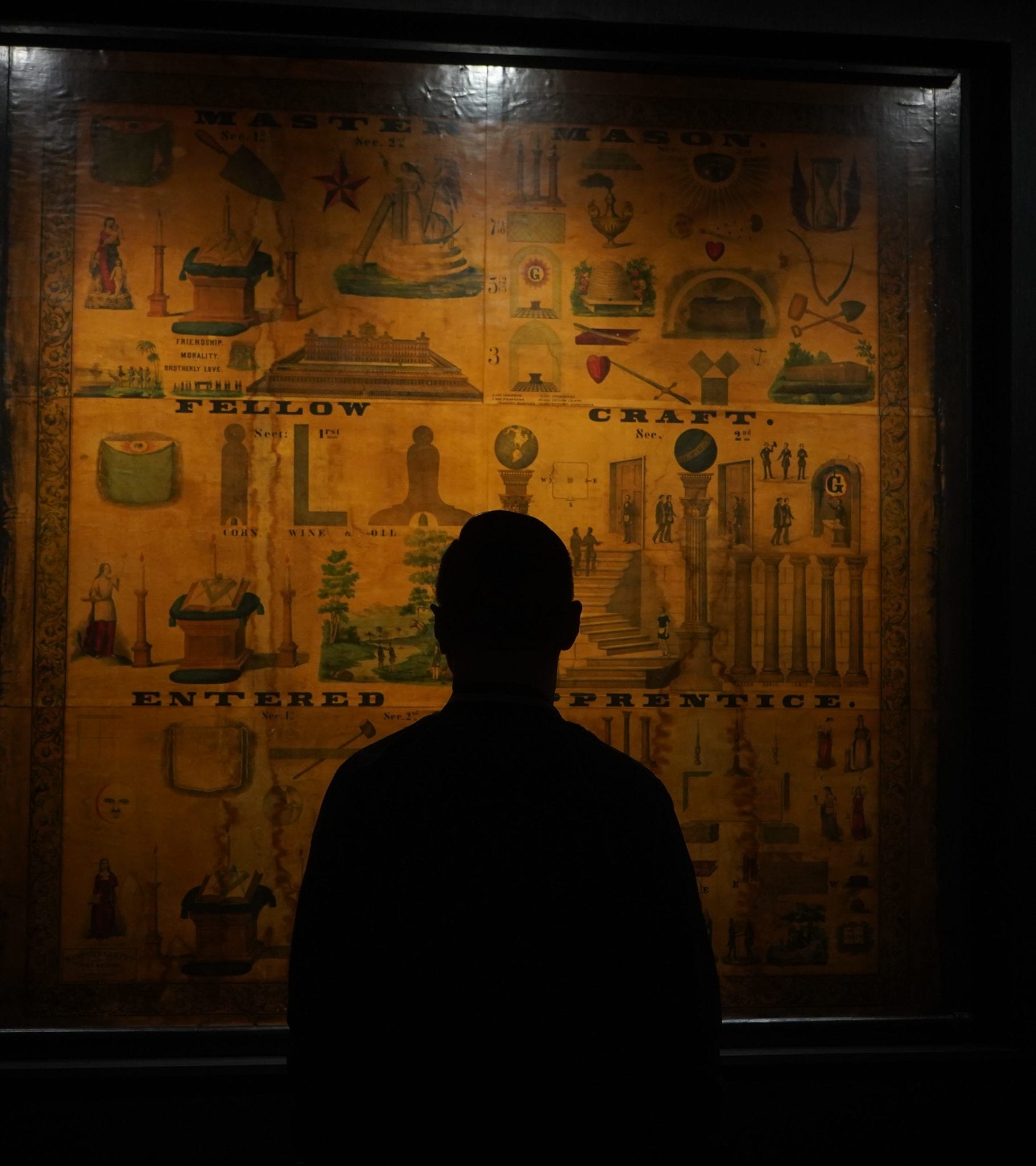
A Shared Heritage
Masonic wall charts and floor cloths were once banned as too revealing. Now, they’re central parts of modern lodges.
By Justin Japitana
Completing the Master Mason degree is great, but it doesn’t exactly quench the competitive thirst. For that, we turn to Build, a vaguely Game of Life-style boardgame from 1980 in which players fill their Trestleboards by collecting “stones” and, presumably, learning Masonic teachings. Does it work? Not really. Does someone earn bragging rights? You betcha! With that in mind, we asked our team of in-house gamers to test this strange relic of game nights past.

Andrew Uehling
Prometheus No. 851
“I like how the cards act as a flashcard-style study guide on Masonic symbols. For a non-Mason or a prospect, you’d probably need help from a candidate coach to understand everything.”
Candler Gibson, Master Mason Phoenix No. 144
“There’s a lot of mention of charity and service in the game—some of the cards tell me to give my game pieces to another losing player. That hurts.”
W.B. Doug Ismail
California No. 1
“I love being competitive, but it defeats the purpose of competition when you’re playing a game about Masonry. You’re not supposed to be the only winner!”
W.B. Jordan Yelinek
Prometheus No. 851
“Accomplishing a perfect ashlar is a long journey that requires time and patience. Every time I draw a playing card, it always demotes me back to Fellow Craft. So the time and patience aspect is definitely there.”

Masonic wall charts and floor cloths were once banned as too revealing. Now, they’re central parts of modern lodges.

How do you tell a life story, set new goals, and define your legacy—all on a single lapel pin?

Masonic wall charts and floor cloths were once banned as too revealing. Now, they’re central parts of modern lodges.